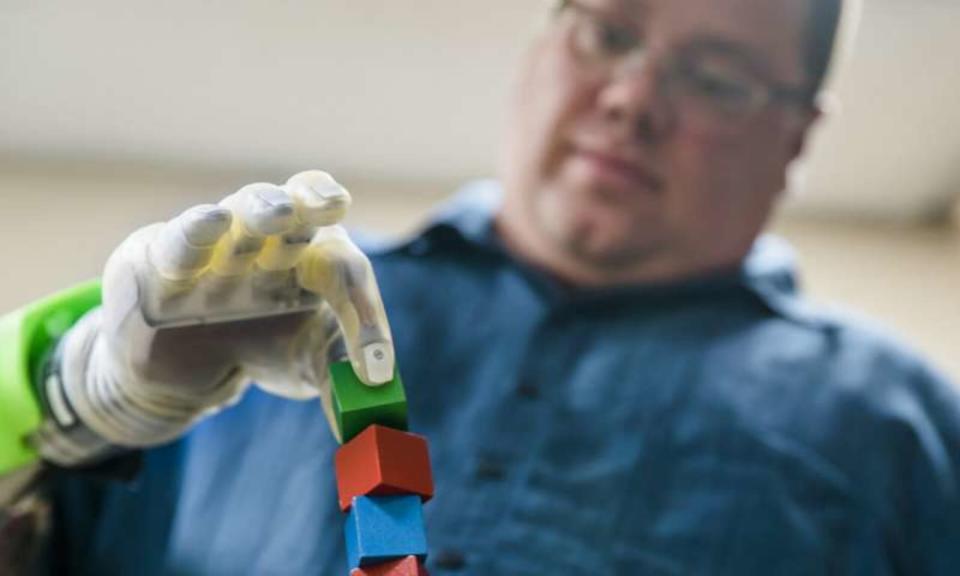Scientists develop neuroprosthetic tech that amputees don't need to learn
It's ultra-precise and intuitive.
For those working in the field of neuroprosthetics, the ultimate goal is to give amputees with artificial limbs natural, intuitive and real-time movement. Indeed, advances in the field have led to mind-controlled systems and even those that create kinaesthetic feedback, but so far such technologies require a great deal of learning and practice by the amputee. Now, however, scientists from the University of Michigan have developed a neuroprosthetic technology that restores intuitive movement to amputees from the get-go -- no learning required.
One of the biggest challenges in mind-controlled prosthetics is finding a strong and stable enough nerve signal to attach to the bionic limb. Scientists already know that peripheral nerves – the network of tiny nerves that fan out to the spinal cord and brain -- are liable to offer the most precise and intuitive control of a bionic limb, but obtaining a nerve signal from them is difficult -- they're small and often obscured by scar tissue.
The University of Michigan team overcame this by wrapping tiny muscle grafts around the nerve endings in participants' arms. These served as regenerative "interfaces", which not only helped prevent the growth of scar tissue, but gave the faint nerve signals a way to be amplified. "To my knowledge, we've seen the largest voltage recorded from a nerve compared to all previous results," said Cindy Chestek, associate professor of biomedical engineering at the university. "In previous approaches, you might get 5 microvolts or 50 microvolts -- very very small signals. We've seen the first ever millivolt signals."
Meanwhile, the team developed algorithms to take care of the "learning" element needed to control the bionic limb attached in this way. "You can make a prosthetic hand do a lot of things, but that doesn't mean that the person is intuitively controlling it. The difference is when it works on the first try just by thinking about it, and that's what our approach offers," Chestek said. "This worked the very first time we tried it. There's no learning for the participants. All of the learning happens in our algorithms. That's different from other approaches."
In tests, participants were able to pick up blocks with a pincer grasp, move their thumb in a continuous motion, lift spherical objects and even play a version of Rock, Paper, Scissors. Study participant Joe Hamilton, who lost his arm in a fireworks accident, said "It's like you have a hand again. You can pretty much do anything you can do with a real hand with that hand. It brings you back to a sense of normalcy."
This is the biggest advancement in neuroprosthetics for many years, and represents a complete step change in the way the field operates, but there is always progress to be made. "It's going to be a ways from here, but we're not going to stop working on this until we can completely restore able-bodied hand movements. That's the dream of neuroprosthetics," said Chestek.


